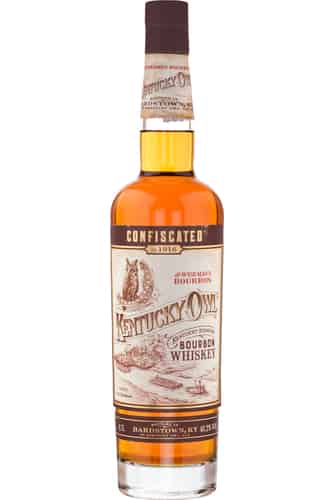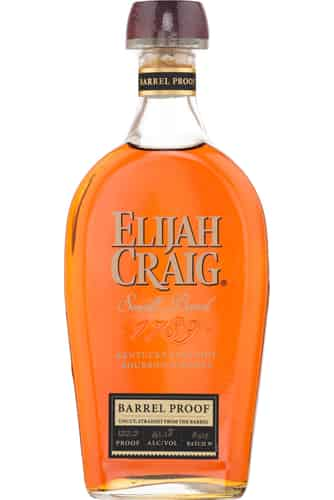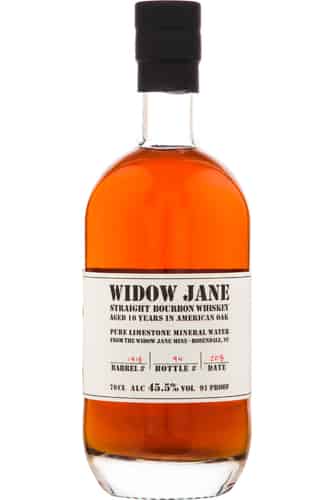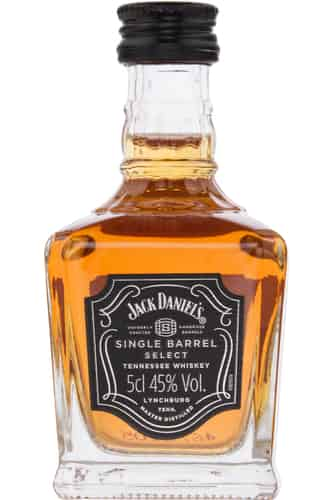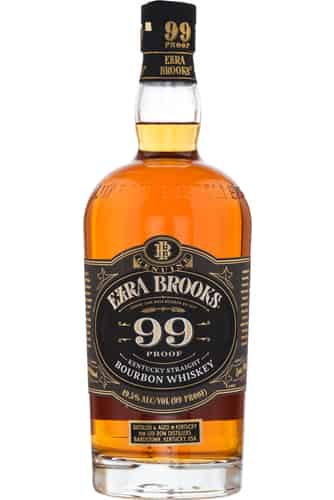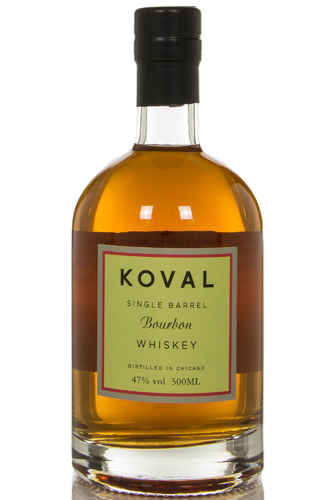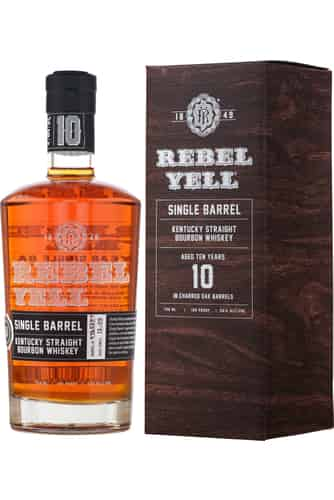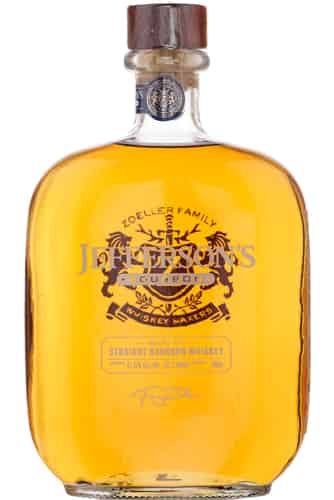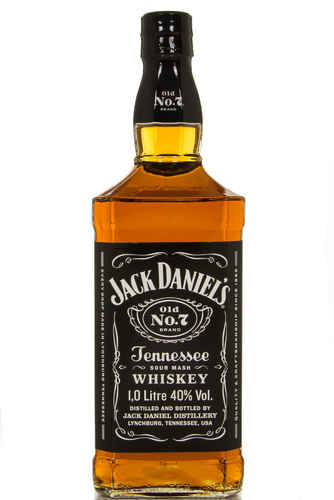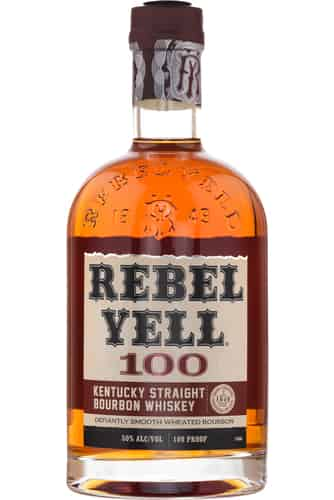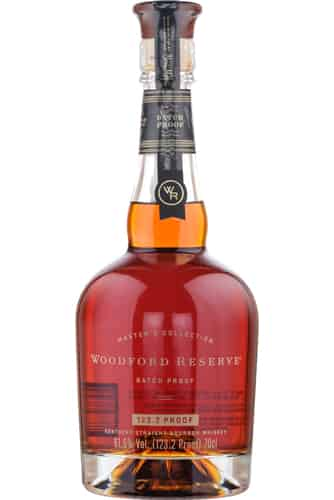- Save
4.00 €
Jack Daniel's Old No. 7 Legacy Edition 3
70 cl, 43%In stock28.80 €32.80 € - Save
4.00 €
Jack Daniel's Old No. 7 Legacy Edition 2
70 cl, 43%In stock28.80 €32.80 € ![]()
Eagle Rare 10 Year Old
70 cl, 45%In stock44.00 €![]()
Jack Daniel's White Rabbit Saloon
70 cl, 43%In stock39.20 €- Save
6.40 €![]()
Jack Daniel's Master Distiller No. 3 (1 Liter)
100 cl, 43%In stock39.20 €45.60 € - Save
4.00 €![]()
Jack Daniel's Old No. 7 Legacy Edition 1
70 cl, 43%In stock28.80 €32.80 € - Save
6.40 €![]()
Jack Daniel's Master Distiller No. 5 (1 Liter)
100 cl, 43%In stock39.20 €45.60 € - Save
4.00 €![]()
Jack Daniel's Master Distiller No. 6
70 cl, 43%In stock32.80 €36.80 € ![]()
Jack Daniel's Single Barrel - Barrel Strength
70 cl, 64.5%In stock84.80 €- Save
4.00 €![]()
Jack Daniel's Sweet & Oaky
50 cl, 53.5%In stock36.00 €40.00 € - Save
4.00 €![]()
Jack Daniel's Master Distiller No. 5
70 cl, 43%In stock32.80 €36.80 € - Save
4.00 €![]()
Jack Daniel's Bold & Spicy
50 cl, 53.5%In stock36.00 €40.00 € ![]()
Jack Daniel's Sinatra Select (1 Liter)
100 cl, 45%In stock135.20 €![]()
Jack Daniel's Single Barrel 100 Proof
70 cl, 50%In stock47.20 €![]()
Buffalo Trace
70 cl, 40%In stock24.00 €![]()
Jack Daniel's Bottled-in-Bond (1 Liter)
100 cl, 50%In stock44.80 €![]()
Kentucky Owl Confiscated
70 cl, 48.2%In stock96.80 €![]()
Elijah Craig 12 Year Old Barrel Proof (Batch B522)
70 cl, 60.5%In stock103.20 €![]()
Smooth Ambler Contradiction
70 cl, 46%In stock56.80 €![]()
Woodford Reserve Master's Collection Batch Proof (2023 Release)
70 cl, 62.35%In stock126.40 €![]()
Sonoma Bourbon Whiskey
70 cl, 46%In stock52.80 €![]()
Jim Beam Lineage
70 cl, 55.5%In stock279.20 €![]()
Elijah Craig 12 Year Old Barrel Proof (Batch B519)
70 cl, 61.1%In stock103.20 €![]()
Evan Williams Single Barrel 2014
70 cl, 43.3%In stock42.40 €![]()
Widow Jane 10 Year Old Bourbon
70 cl, 45.5%In stock75.20 €![]()
Jack Daniel's Bonded
70 cl, 50%In stock36.00 €![]()
Noah's Mill
70 cl, 57.2%In stock71.20 €![]()
Basil Hayden's
70 cl, 40%In stock52.80 €![]()
Ezra Brooks Bourbon
70 cl, 40%In stock20.00 €![]()
Jim Beam White Label Miniature
5 cl, 40%In stock2.40 €![]()
Rowan's Creek
70 cl, 50.05%In stock48.00 €![]()
Jack Daniel's Single Barrel Miniature
5 cl, 45%In stock4.80 €![]()
Ezra Brooks 99
75 cl, 49.5%In stock31.20 €![]()
Yellow Rose Outlaw Bourbon
70 cl, 46%In stock54.40 €![]()
Yellowstone Select Limited Edition 2023
75 cl, 50.5%In stock137.60 €![]()
Yellowstone Select 150th Anniversary
75 cl, 50%In stock59.20 €![]()
Jack Daniel's Old No. 7 Legacy Edition 2 (1 Liter)
100 cl, 43%In stock42.40 €![]()
Jim Beam Double Oak
70 cl, 43%In stock21.60 €![]()
Koval Bourbon
50 cl, 47%In stock41.60 €![]()
Jack Daniel's Old No.7
70 cl, 40%In stock22.40 €![]()
Jim Beam White Label (1 Liter)
100 cl, 40%In stock21.60 €![]()
Baker's 7 Year Old Bourbon
70 cl, 53.5%In stock87.20 €![]()
Michter's US*1 Bourbon
70 cl, 45.7%In stock60.00 €![]()
Few Bourbon Cold Cut Coffee
70 cl, 46.5%In stock56.00 €![]()
Rebel 10 Year Old Single Barrel
75 cl, 50%In stock84.00 €![]()
J.W. Dant Bottled in Bond
75 cl, 50%In stock34.40 €![]()
Rebel Small Batch Reserve Bourbon
70 cl, 45.3%In stock31.20 €![]()
Jefferson's Bourbon
70 cl, 41.15%In stock43.20 €![]()
Town Branch Bourbon
70 cl, 40%In stock55.20 €![]()
High West Bourbon
70 cl, 46%In stock46.40 €![]()
Four Roses Small Batch Bourbon
70 cl, 45%In stock31.20 €![]()
Jack Daniel's Old No. 7 Miniature
5 cl, 40%In stock3.20 €![]()
Jack Daniel's Old No.7 (1 Liter)
100 cl, 40%In stock30.40 €![]()
Maker's Mark 101 (1 Liter)
100 cl, 50.5%In stock52.80 €![]()
Rebel 100 Proof
70 cl, 50%In stock36.00 €![]()
Heaven's Door Tennessee Bourbon
70 cl, 42%In stock68.80 €![]()
Woodford Reserve Batch Proof (2019 Release)
70 cl, 61.6%In stock127.20 €![]()
Woodford Reserve Master's Collection Historic Barrel Entry
70 cl, 45.2%In stock118.40 €![]()
Uncle Nearest 1884 Small Batch
70 cl, 46.5%In stock57.60 €![]()
Yellowstone Select
70 cl, 46.5%In stock49.60 €
Sorry, we didn't find anything. Please try changing your search criteria.
Bourbon History
America’s Spirit. There are few things more distinctively American than Bourbon. Indeed, whiskey (note the ‘e’!) seems to have been close at hand at nearly every major point in American history: from revolution, to the Old West, to the cocktail-mixing era of Prohibition, to the modern craft-distilling age. Typified by its sharp, fresh and tangy sweetness, Bourbon is doubtlessly one of the world’s finest spirits.
Bourbon is also notable for having some of the strictest production laws of any spirit. The defining feature in the production process, and particularly consequential for flavour, is the prescription that Bourbon must be matured in fresh American oak casks. Whereas most Scotch and Irish whisky is matured barrels that have held other liquid previously (usually Bourbon!) Bourbon must be matured in brand new casks that have never been used before. Former Bourbon casks are the lifeblood of many other industries, providing barrels for Scotch, Irish whiskey, tequila, beer, coffee, maple syrup, hot sauce and cocktails.
Another unique factor in Bourbon production is the grain used to make it. Throughout history, farmers looking to increase profits on excess crop has turned to distilling. In Scotland and Ireland this produced Malt Whisky made from Barley, whilst the French produced Brandy and other nations made spirits from potatoes, rice, and all manner of fruit. In America, immigrants from the British Isles brought with them knowledge of distilling and agriculture, and soon put them to practice by producing spirit made from maize, or corn, native to the Americas. To this day, all Bourbon must be made with at least 51% corn in the mashbill. Furthermore, nothing other than water is permitted to be added to Bourbon, and the spirit must be distilled to a proof below 80% ABV.
There is no minimum age for Bourbon, thought any whiskey that uses the term "straight" must be at least 2 years old, and must state the age if under the age of 4. The charcoal filtering process employed by some distilleries, particularly those in Tennessee, known as the Lincoln County process is not considered an addition of flavour, and therefore (contrary to common belief) nearly all Tennessee whiskey is technically Bourbon. That said, all whiskey that wishes to be known as Tennessee whiskey must employ the Lincoln County process.
Whilst these laws might at first seem restrictive, they have (perhaps inadvertently) lead to some of the most imaginative innovations and experimentations in distilling. One notable example of this is the inventive use of mashbills by distillers. 51% of the mashbill is required to be corn (though most Bourbon makers use between 60-80% corn in their whiskey), yet this leaves 49% for distillers to play with, often in surprising ways and to great result. Rye and barley (both unmalted and malted) are often used, as is wheat. Rye adds notes of spice and herbs, whilst wheat lends a doughy quality and barley brings a cereal sweetness.
Buffalo Trace is an example of a low rye mashbill, whilst Blanton’s (made by the same distillery) is an example of a higher rye, and Maker’s Mark is one of the most prominent “wheaters”. Some distilleries have experimented even further, producing whiskey made with Quinoa and Millet, whilst Balcones produce a Bourbon using a blue strain of maize! Other distilleries such as Four Roses make a range of different Bourbons using different propriety yeast strains in addition to different mashbills. As with Scotch and Irish whiskies, "finishing" the whiskey for a period in another barrel – perhaps sherry or port – has recently become more popular.
It is impossible to write about Bourbon without mentioning Kentucky. This southern American state has a hot climate, fertile soil and limestone rich earth that make the region ideal for the growing of corn and production of Bourbon. The iron-free water in the area is often suggested to be part of the region Indeed, it is doubtlessly the spiritual home of the spirit, boasting some of American whiskey’s greatest and most renowned distilleries, such as: Buffalo Trace, Four Roses, Woodford Reserve, Jim Beam, Wild Turkey, Maker’s Mark and Heaven Hill. Whilst Bourbon can be made anywhere in America, 95% of it is made in Kentucky.
A further distinctive quality of this irrepressible spirit is the presence of “Bottled-in-Bond” Bourbons. These spirits are widely regarded as some of the best bargains available in the spirits world. The drink’s name refers to the Bottled-in-Bond Act of 1897, which sought to allay drinker’s fears about the adulteration and inauthenticity of Bourbon. At the time whiskey was often cut with other, occasionally harmful, substances, such as tobacco, acid and iodine, in a bid to drive production costs down and stretch product. The act stated that for a whiskey to be labelled bottled-in-bond it must have been produced by one distillery, of one mashbill and in one year. It must be aged for at least four years in a government bonded warehouse, and bottled at 50% ABV. Crucially too, the place of bottling – if different to the distillery – must be stated on the bottle. This addressed what continues to be a controversial practice in American whiskey: the bottling of whiskey by those who did not produce it. The act also ensured that the distillers paid all the tax due to the government, which was also lowered as an incentive. Due to the higher alcohol content of these whiskies, they continue to attract drinkers who prefer a less dilute and more flavourful spirit!
Bourbon has a long history stretching back to America’s foundation as a state. Yet, and thanks in no small part to the industry’s spiritual home in the deeply religious southern states of America, American whiskey has been dogged by a particularly resilient temperance movement. This would eventually culminate in the darkest period for American drinks: Prohibition. Kentucky went from having 17 distilleries before prohibition, to 7 afterwards, with just a few operating in the interim. Interestingly, the amount of liquor consumed during prohibition increased during "the noble experiment", though it was of a poor, and indeed, dangerous quality.
Luckily these days there is a great quantity and variety of Bourbon on offer for drinkers. Here at FineDrams we have curated a wide range of the very best Bourbons on the market, from the classic distilleries such as Buffalo Trace, Jim Beam and Four Roses, to more experimental producers such as Jefferson’s, High West, and Koval. Bourbon offers a huge range of flavours, from the warming spice of rye heavy Bourbons, to the subtle sweetness of wheated whiskies like Maker’s Mark, there is truly a Bourbon for everyone.
Timeline
The early history of distilling in America is hazy. Distilling mostly likely came to the nation in the 17th century, as immigrants from Britain and Ireland began to arrive. Stills were pretty crude affairs, likely to consist of a rudimentary pot-still design with a swan neck and a worm for condensation- similar to what is found in illicit moonshine making today.
-
1753
Michter’s distillery is founded as Shenk’s distillery, by a Swiss Mennonite in Pennsylvania. It produced mostly rye whiskey.
-
1775
Soon after the revolution began, whiskey was used as a currency by troops and the public, such was its value.
George Washington is supposed to have visited Shenk’s distillery and purchased whiskey to restore his troop’s during the long winter.
Meanwhile, the Lee brothers begin to distil liquor on the site of the Buffalo Trace distillery.
-
1776
The Corn Patch and Cabin Rights Act offered 400 acres of land to any settler who built a cabin and planted corn in Kentucky- then a part of Virginia. Many flocked to the area to take advantage of this law. Before this, Maryland and Pennsylvania had been the major liquor-producing states, mostly making rye whiskey, as rye was the dominant grain. This soon changed, as Kentucky was established as the major distilling region of America.
-
1779
Jacob Myers comes to Kentucky to distil, as do the brothers Samuel and Joseph Davis, who travelled on horseback with forty-gallon copper stills.
-
1780
Distilling begins on the site of what is now the Woodford Reserve distillery.
-
1783
The supposedly first purpose built commercial distillery was founded by Evan Williams in Louisville, Kentucky, on the Ohio River.
-
1785
Bourbon County, Kentucky, is established.
-
1789
A preacher, Elijah Craig, founds his distillery in Fayette County, Kentucky. He is rumoured to have been the first person to char the barrels, leading to some calling him the first man to distil and mature bourbon as we know it today. Historians have cast doubt on this claim, as there is little evidence that he practiced charring barrels. Likely, his whiskey was very similar to that being produced by the dozens of other farm-distilleries in Kentucky.
-
1791
In a bid to ease the public debt after the War of Independence, the American Government placed taxes on domestically produced liquor. Import duty was already very high, so this was seen as a means of recouping further tax revenue. Whilst it applied to all spirits produced in the states, whiskey was by far the most common and popular, and it was known as the "Whiskey Tax."
-
1792
The oldest building still extant on the Buffalo Trace complex, the Riverside House, was constructed by Commodore Richard Taylor.
-
1791-1794
The tax would lead to continual unrest between farmers (for whom whiskey was an excellent means of turning excess crop into profit) and the federal government, eventually leading to armed insurrection. 500 armed men (many of them veterans of the Revolutionary wars) attacked the fortified living quarters of a tax inspector. Around 4 of those involved were killed. Those who complied were also threatened, and other tax inspectors were coerced at gun point and tarred and feathered. George Washington personally rode at the head of an army of over 13,000 militiamen, but there was no direct conflict between the two forces and the protest soon dispersed, to be replaced with continually low level tax avoidance, and a poorly-enforced law.
-
1795
The Pinckney Treaty gave Americans free access to the Mississippi river, allowing distilleries to ship their wares with greater ease.
The Beam family distillery was founded in this year.
-
1801
The whiskey tax was repealed. It had become a serious political issue and an electoral battleground.
-
1803
The Louisiana purchase, which opened up vast new lands with which distillers could trade, leading to barrels of whiskey being shipped down the Mississippi, with the final destination being New Orleans- a great drinking town!
There are a few side effects to the shipping of whiskey that are integral to the growth of Bourbon as a style. Firstly, the spirit was poured into fresh American-oak barrels for transporting. As the whiskey travelled down the rivers of the American south, new colours and flavours emerged. Soon it was understood that the whiskey was interacting with the barrel to produce these flavours, and the Bourbon style of new-oak aging was established. Also, as the barrels were shipped across America and beyond, they were marked with their place of origin. Due to the high density of distillers in Old Bourbon County, Kentucky, people began to ask for Bourbon whiskey, and the spirit’s name was born. Whilst most whiskey at the time was rye, the whiskey from Old Bourbon County was noted as being corn-based, differentiating it further.
-
1800
Daniel Weller, grandfather of W. L. Weller, has his distillery licenced.
-
1805
Burks’ distillery, now used to produce Maker’s Mark, is founded.
-
1806
The Balance and Columbian Repository journal provides the first definition of a cocktail in May of this year, stating: "Cock-tail is a stimulating liquor, composed of spirits of any kind, sugar, water, and bitters—it is vulgarly called bittered sling, and is supposed to be an excellent electioneering potion, in as much as it renders the heart stout and bold, at the same time that it fuddles the head." The cocktail would prove to be a most important creation to the Bourbon industry.
-
1817
Steam-powered distilling is first used by the Hope Distillery, later becoming the industry standard. The distillery was opened in the same year, and closed in 1820. It was then used as a racetrack.
-
1821
A newspaper advertisement of this year by the Stout and Adams company is the first recorded reference to "Bourbon Whiskey".
-
1823
The visionary Dr. James Crow begins to add spent mash to the new mash during the fermentation process. This technique balances the acidity of the mash, and prevents unwanted further fermentation and bacteria from growing. This becomes known as "Sour Mash" and is now an industry standard.
-
1826
The idea to mature whiskey in charred barrels was possibly first had by a grocer in Lexington, who wrote to the gin distiller John Corlis that charring the barrels by "a 16th of an inch" would "much improve" the whiskey’s flavour. It was likely he had adjudged this from seeing the sales of Cognac (aged in charred barrels) outstripping that of whiskey.
-
1830
The Louisville and Portland Canal is opened, allowing merchants to avoid the perilous Falls of Ohio. This 2 mile stretch of rapids saw the altitude of the water drop about 26 feet. The canal reduced the cost and increased the speed of shipping, greatly benefiting the whiskey industry.
-
1831
The Coffey still is invented, allowing distillers to continuously distil their spirit.
It was whiskey producers that created the term "brand name", so named after their practice of burning (or "branding") the company name into the barrel tops. In the 1830s, E.H. Taylor ensured his whiskey stood out from the crowd by shining the brass rings of the barrel to a high polish and developing a complex trademark.
-
1840
Jacob Spears is the first distiller to actively use the name Bourbon on the bottle of his whiskey.
-
1850
The recently opened canals were soon superseded by the spread of the railways in Kentucky, with the Louisville and Nashville railway opening in this year. Soon bourbon producers were able to ship their whiskey with the greatest speed yet.
-
1861-1865
The Civil War lead to a shortage of bourbon, as distillers and workers were drawn into the conflict. Furthermore, the battles were often fought in the major distilling areas of the American south.
The Civil War did lead to the creation of Blanton’s distillery, after Major Blanton put all his money into Confederate War Bonds, worth nothing after the defeat of the South, and decided to turn to distilling to earn a living.
-
1869
Thomas H. Handy purchases the famous Sazerac coffee house of New Oreleans in 1869.
The Ripy Family distillery opens, now known as the Wild Turkey distillery.
-
1870
George Dickel distillery is founded.
George Gavin Brown begins to bottle his Old Forrester bourbon with sealed necks, ensuring consumer confidence that the bourbon had been untampered with and was authentic. This would become the industry standard. Old Forrester was also the first bourbon to be sold exclusively in bottles rather than barrels. His company would later grow to become the behemoth Brown-Forman drinks company.
-
1872
The legendary Stitzel Distillery is founded, initially a sour-mash whiskey distillery.
-
1875
Despite the 1866 establishment year given by the brand, 1875 is likely the year of foundation of Jack Daniel’s.
The latter part of the 19th century sees the first golden age of cocktails, with Bourbon and rye forming the base spirit for famous cocktails such as the Manhatten, the Old-Fashioned and the Whiskey Smash.
-
1879
Frederick Stitzel introduces the racked and tiered system of barrel storage.
Barton distillery is founded.
-
1880
The Kentucky Distillers’ Association, the Bourbon industry’s advocate, is formed when a group of distillers meet at Galt House in Louisville, organising to protect the spirit from "needless and obstructive laws and regulations".
-
1888
Four Roses distillery is founded.
-
1892
A. Smith Bowman distillery is founded.
-
1893
Julian "Pappy" Van Winkle began working as a salesmen for the W.L. Weller and Sons whiskey company, at the age of 18.
-
1897
The Bottled-in-Bond act is passed.
-
1904
An automatic bottling machine is invented by Michael Owens, allowing the bottling of spirits to be widespread for the first time.
-
1909
The year of Taft’s decision. This was a watershed moment for the American whiskey industry. President William Taft enshrined the composition and definition of whiskey in law. The Pure Food Act stated that whiskey had to be made from grain, not from sugar, molasses or fruit. All whiskey that included other spirits must be named “blended”. The titles “Rye” and “Bourbon” were allowed as a means of identifying the largest grain in the mashbill.
-
1910
Weller acquires the Stitzel distillery to form the Stitzel-Weller distillery, which would produce some of the finest whiskies of the 20th century.
-
1919-1933
Prohibition brings whiskey production to a shuddering halt. The law banned the creation, selling and transportation of alcohol. Only six distilleries were allowed to continue production for medical purposes: Brown-Forman, Frankfort Distillery, James Thompson and Brothers, American Medical Spirits, Schenley Distillery, and A. Ph. Stitzel Distillery. Consumption of Bourbon for medical reasons skyrocketed, with Walgreens chemists expanding from 20 stores at the start of prohibition, to nearly 400 by its end. Consumption of spirits increased during this time, though much of it was homemade and dangerous. By the end of prohibition, Kentucky’s distilleries had dwindled from 17 to 7.
-
1928
As stocks of "medicinal whiskey" were rapidly reducing, the US Government allowed for a 100 day amnesty of distilling, known as the Distiller’s Holiday. During the 100 days, distillers produced over 3 million gallons (over 11 million litres) of whiskey.
-
1933
Prohibition is repealed, and America celebrates in bars across the country. The Bourbon industry, having suffered immensely, instantly rebounds, with over 77 distillers registered within 4 years.
In the post-prohibition period, Four Roses establishes itself as the most popular bourbon in America, far outstripping its competitors.
The Beam distillery is renamed Jim Beam, after James B. Beam who took over and rebuilt the company following prohibition.
-
1935
Heaven Hill distillery is founded.
-
1941
As America joined the Second World War, the industry again suffered, as America turned itself towards the war effort. Bourbon distillers had their facilities controlled by the War Production Board, who used them to produce industrial alcohol for the military. The whiskey industry created nearly 45% of the nearly 6.5 billion litres of alcohol produced during WWII.
Meanwhile, the list of grains allowed to be used in Bourbon and Rye production is expanded to include wheat and other small cereals.
-
1964
Congress recognises Bourbon as "America’s Native Spirit", and "a distinctive product of the United States". The US Government also resolve to take the necessary action to prevent whiskey claiming to be bourbon from being imported into the US.
-
1965
Pappy Van Winkle dies aged 89, at the time he was the nation’s oldest distiller.
-
1974
Vodka sales outstrip Bourbon sales in the US for the first time, signally the beginning of the spirit’s late 20th century downturn.
-
1984
Blanton’s becomes the first Bourbon to be marketed as "single barrel" whiskey. This heralded a new age of small-batch and small-scale production in Bourbon, reaching its zenith in the 21st century.
-
1988
Booker Noe, of the Jim Beam distillery, coins the term “Small Batch” when he releases his Booker’s Bourbon, created from a small selection of barrels.
-
1999
The Kentucky Bourbon trail was introduced, to give consumers a look at the production methods of Bourbon, and allow them to visit distilleries and whiskey experiences, whilst learning about the spirit’s long history.
-
21st Century
American Whiskey sees extraordinary growth in the early part of the 21st century. Consumers look for more specialised products, with an emphasis on craft production. "High-End" whiskies enjoy huge growth, as drinkers often travel many miles and queue for hours to try to get their hands on rare whiskies. Certain cult bottlings go for thousands of dollars on the secondary markets. The upturn also seems growth in the number of bars carrying quality Bourbons, and the number of bourbon producers. Distilleries such as Willet and Michter’s reopen under management dedicated to producing excellent whiskey. Bourbon is produced across the nation, with Hudson in New York state, to High West in Utah, to FEW Spirits in Evanston, outside of Chicago (an area which continued to have prohibition until 1972). In 2007, September was declared National Bourbon Heritage Month, marking a month of events every year celebrating America’s spirit. There is more Bourbon of a high quality on the market than ever before, and drinkers are blessed with a wealth of choice. Here at FineDrams we believe we have the very best.
















